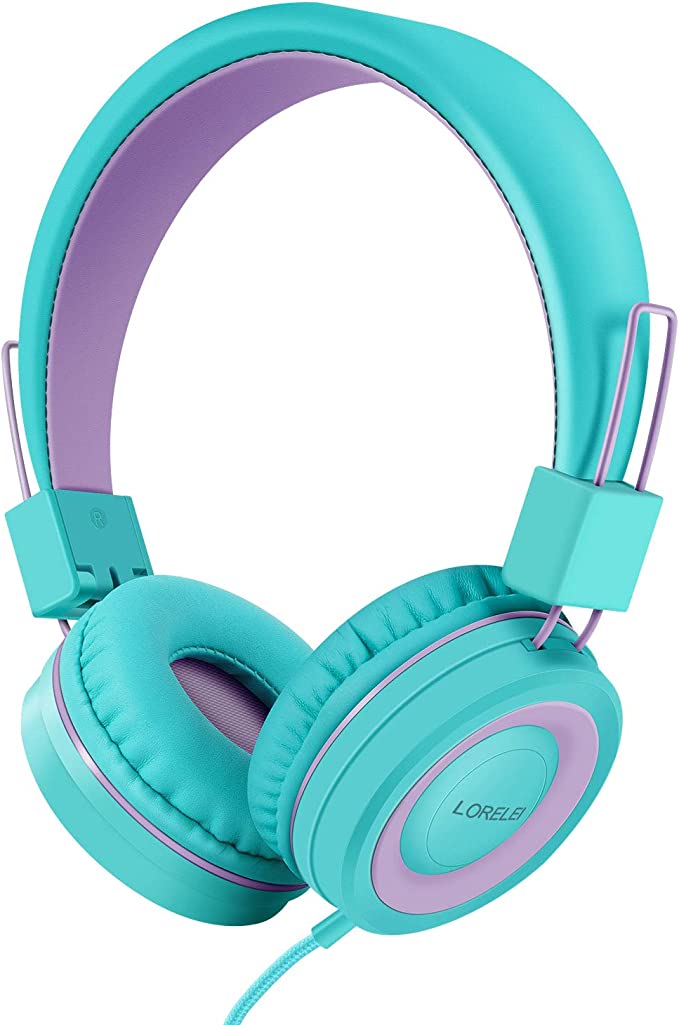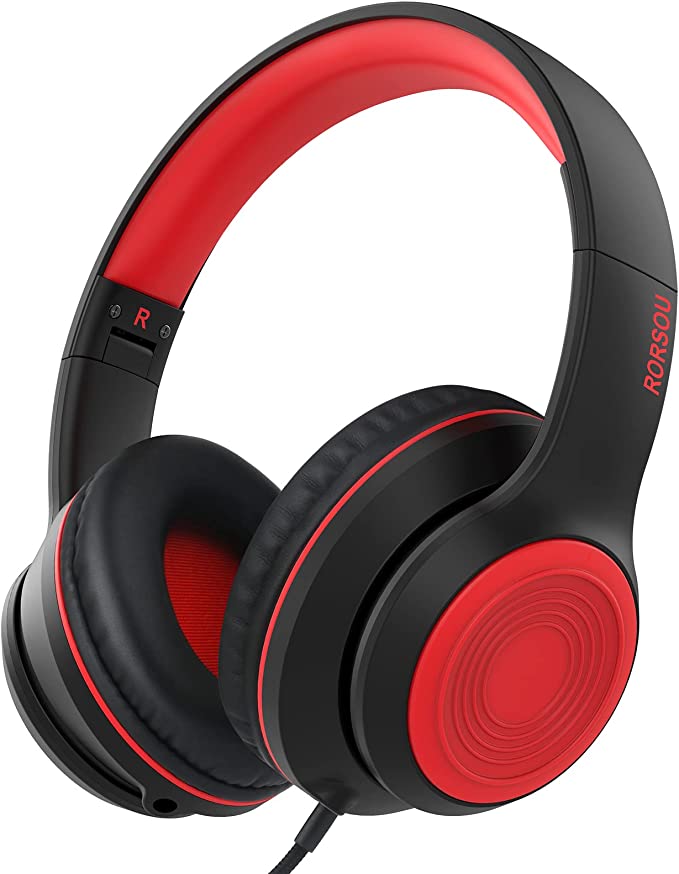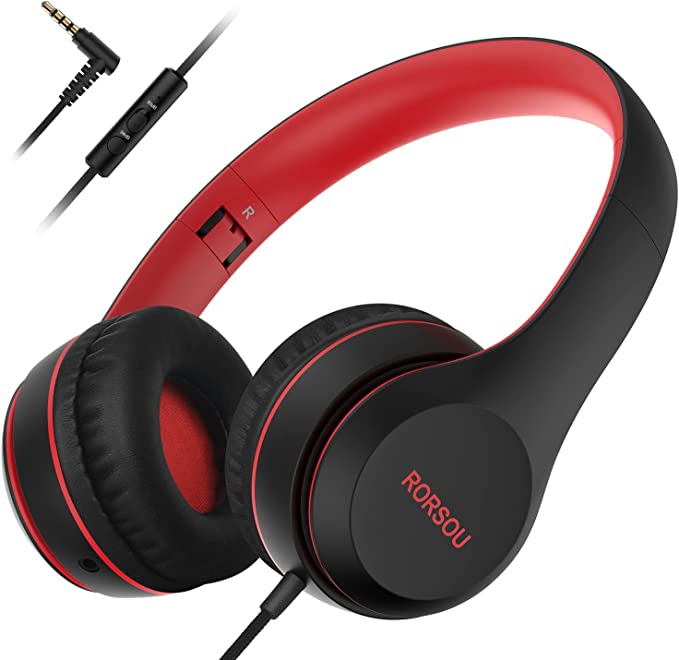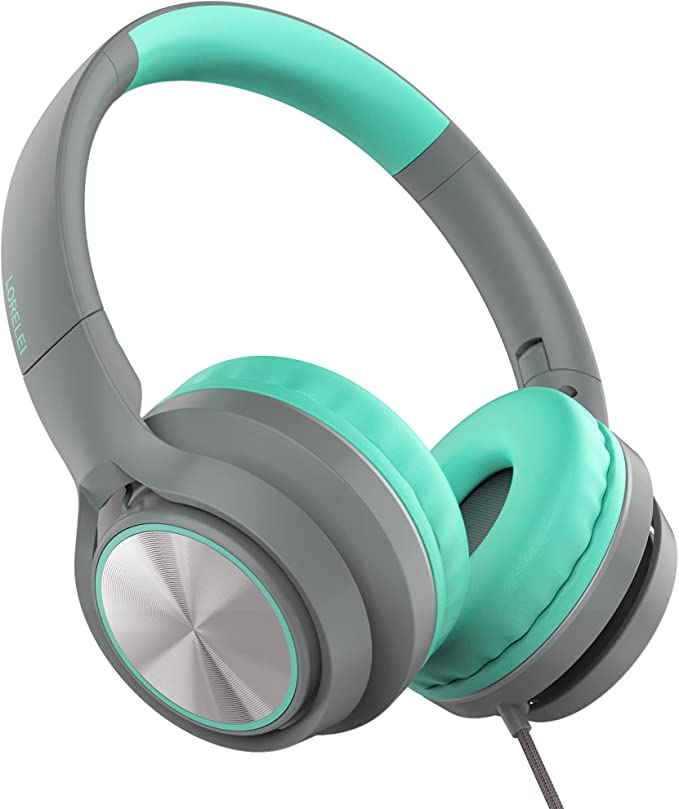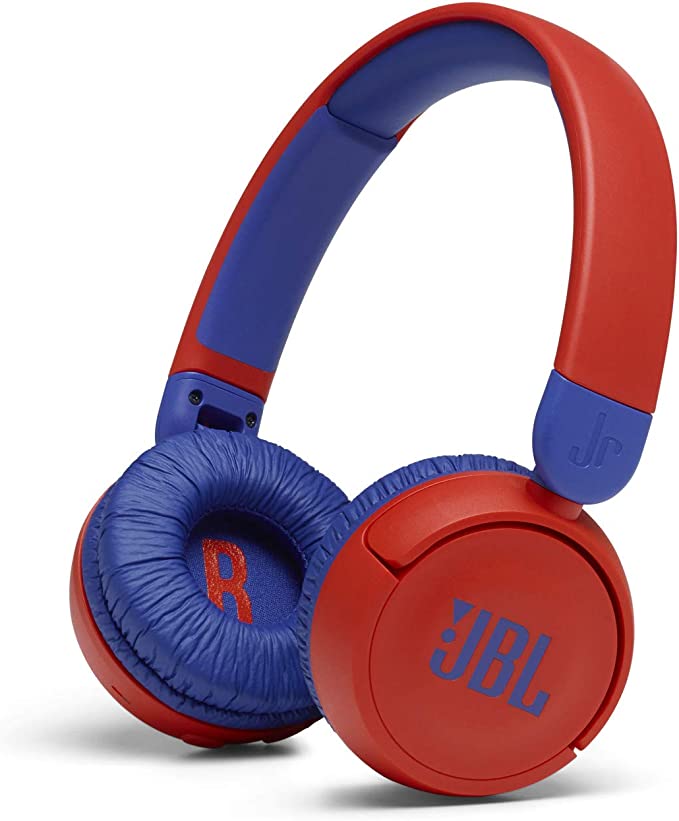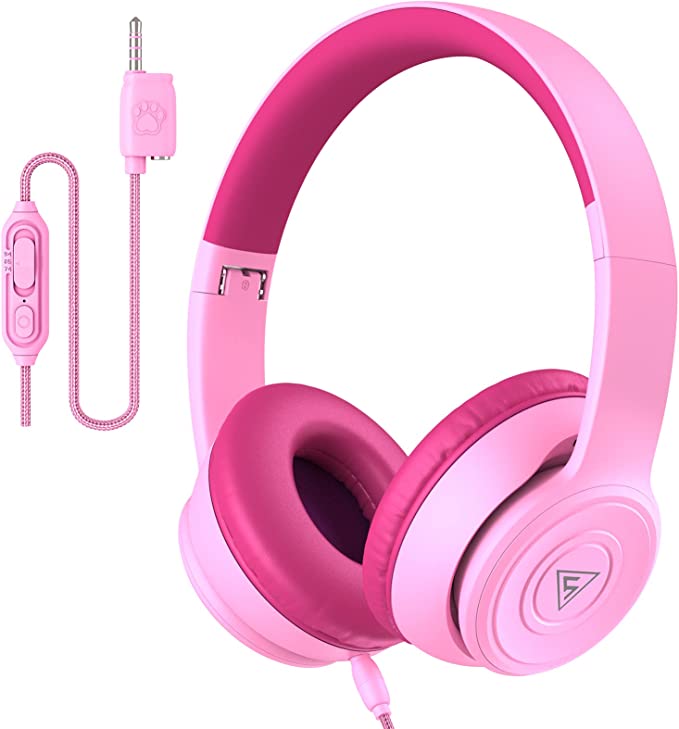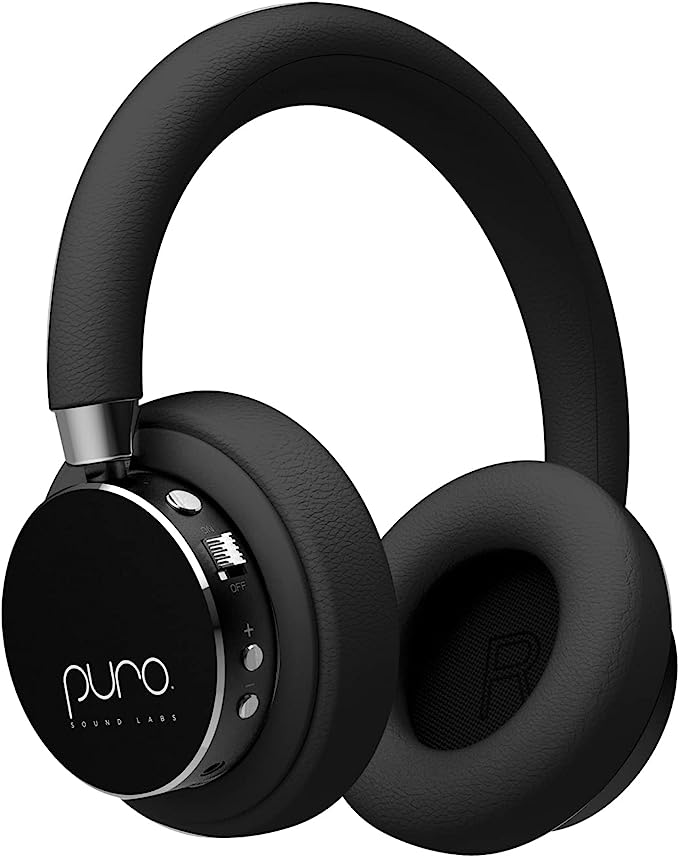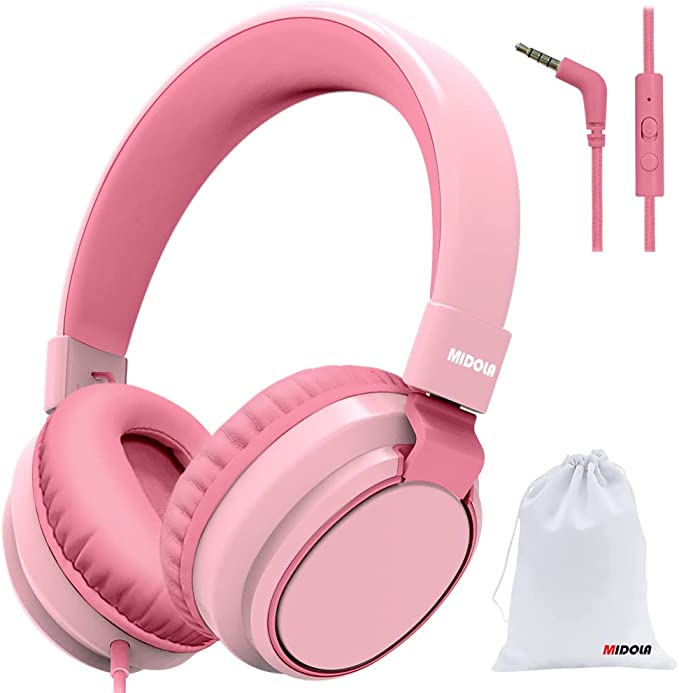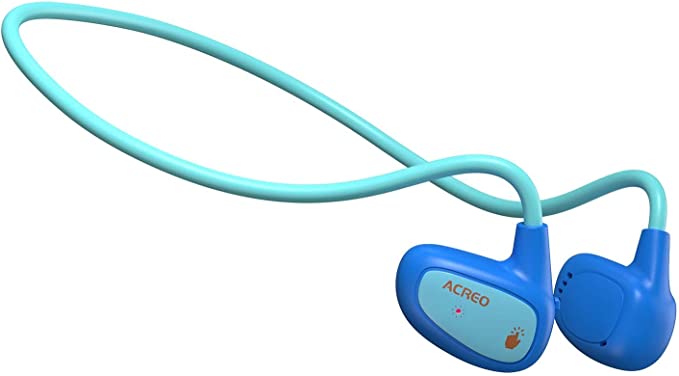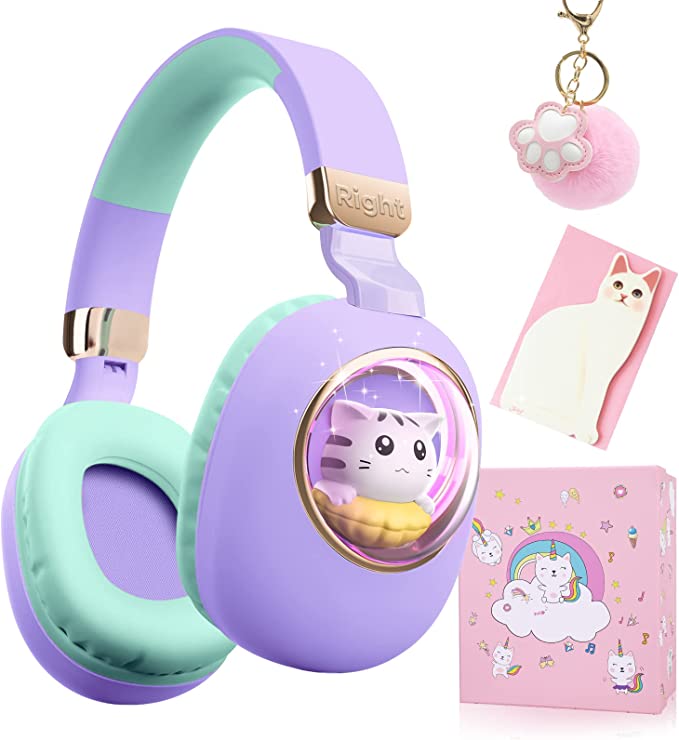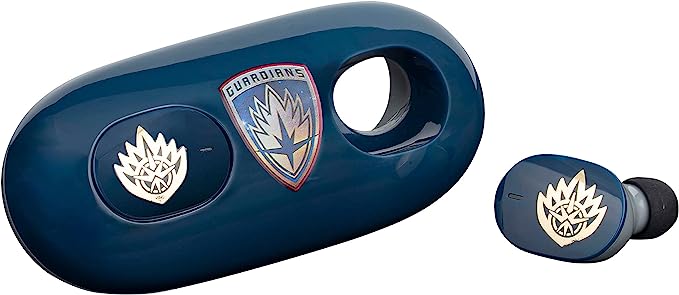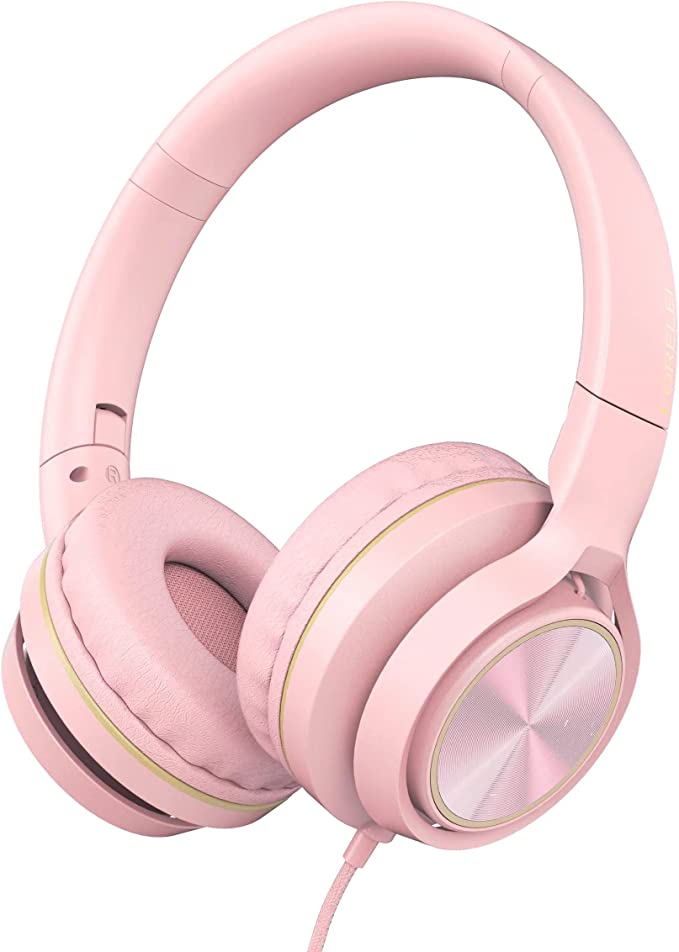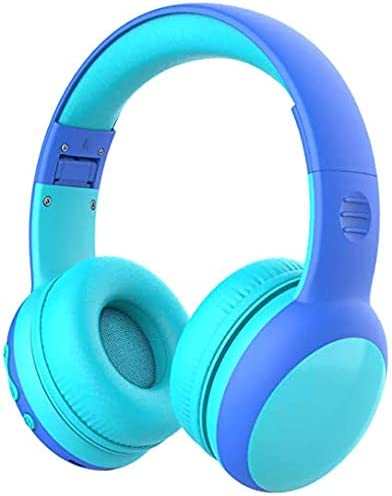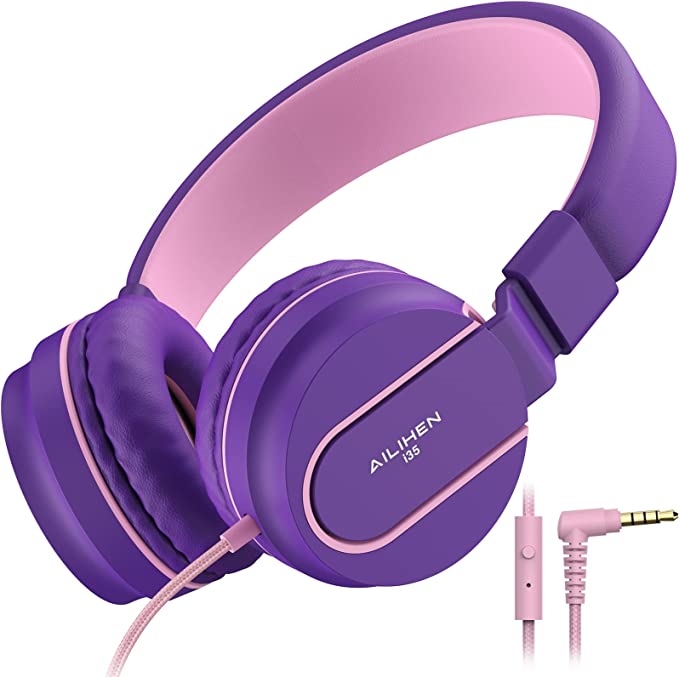igooot U8 Kids Headphones Wired: The Science of Safe, Comfortable, and Clear Audio for Young Listeners
Update on May 14, 2025, 11:47 a.m.
The world our children inhabit is vibrant with sound, increasingly delivered through personal audio devices. From interactive learning platforms and virtual classrooms to immersive games and music, headphones have become almost indispensable companions for young minds. Yet, this constant auditory engagement brings a critical question to the forefront for every discerning parent and guardian: how do we ensure this gateway to knowledge and entertainment doesn’t inadvertently compromise their delicate hearing or long-term comfort? It’s a balancing act between embracing technology and safeguarding well-being. This is where thoughtfully engineered solutions, grounded in scientific principles, come into play, and today, we’ll take a closer look at one such example: the igooot U8 Kids Headphones Wired. As an auditory health scientist and ergonomic design consultant, I aim to dissect its features not as a mere product review, but as an exploration of the science that underpins a safer and more comfortable listening experience for children.

The Unseen Shield: Understanding the Science Behind Volume Limitation and Auditory Protection
Perhaps the most crucial aspect of any headphone designed for a child is its ability to protect their hearing. A child’s auditory system is still developing and is significantly more vulnerable to noise-induced hearing loss (NIHL) than an adult’s. NIHL is insidious; it’s often gradual, painless, and irreversible. The primary culprit? Sustained exposure to excessive sound pressure levels, measured in decibels (dB). Think of decibels like water pressure in a pipe – a gentle stream is harmless, but a high-pressure jet can cause damage.
The igooot U8 headphones incorporate a dual-mode volume limiter, a critical piece of protective technology.
- The 85dB Guardian for Daily Use: The first mode caps the maximum volume at 85dB. Why this specific number? Health organizations worldwide, including the World Health Organization (WHO) and the U.S. National Institute for Occupational Safety and Health (NIOSH), generally recognize 85dB as the threshold where prolonged exposure (typically up to 8 hours a day) begins to pose a significant risk to hearing. For a child engaged in online lessons at home, listening to an audiobook, or playing a quiet game, this 85dB limit acts as a constant, gentle guardian, significantly reducing the potential for auditory fatigue and long-term damage. It’s about creating a sustainable listening environment where curiosity can flourish without悄悄地 (qiāoqiāo de - quietly) eroding their hearing acuity.
- The 94dB Adaptation for Noisier Worlds: However, life isn’t always lived in a quiet room. Imagine a child on an airplane, the drone of the engines a constant hum, or in a car during a family road trip. In such scenarios, an 85dB limit might render audio content almost inaudible, leading to frustration. The igooot U8 addresses this with a switchable 94dB mode. While 94dB is a higher sound pressure level, and exposure should be for shorter durations, this mode aims to restore intelligibility over ambient noise. It’s a pragmatic compromise – offering clarity when needed, while still providing a level of protection significantly better than headphones with no limits at all. As one user, K. Jacobson, found, this is “perfect as a ‘travel mode’ in a noisy environment.” This dual-mode approach acknowledges diverse listening contexts, empowering parents and older children to make an informed choice based on their surroundings.
It’s important to note, as highlighted by reviewer C. Flake regarding her hearing-impaired child, that a fixed volume cap might not suit every unique need. This underscores that while such safety features are invaluable for the majority, specific individual requirements always warrant careful consideration.
Complementing the active volume limitation is the principle of Passive Noise Isolation, a benefit derived from the U8’s “TRUE KIDS OVER EAR HEADPHONES” design. The generously padded earcups are engineered to create a seal around the child’s entire ear. Acoustically, this seal acts as a physical barrier, dampening a portion of the ambient sounds from the external environment before they even reach the ear. Think of it like closing a window to reduce street noise. The direct benefit? When less outside noise intrudes, a child is less likely to feel the need to crank up the volume to hear their audio clearly. This passive attenuation works hand-in-hand with the volume limiter to foster safer listening habits.

The Architecture of Comfort: Ergonomics Engineered for Growing Bodies and Minds
For a child, discomfort is a major deterrent. A pair of headphones, no matter how safe, will be quickly abandoned if they pinch, press, or cause irritation. This is where the science of ergonomics – designing for human well-being and optimal performance – becomes paramount, especially when considering the unique anatomical and physiological characteristics of children.
The igooot U8 headphones place significant emphasis on a “TRUE PERFECT FIT,” achieved through several interconnected design elements:
- The Embrace of Over-Ear Cushions: The choice of an over-ear (circumaural) design, as opposed to on-ear (supra-aural), is deliberate for children. The U8’s cushions, described as “full and soft foam paired with skin-friendly leather,” are designed to encircle the ear. This distributes pressure more evenly across a wider area of the head, rather than concentrating it directly on the sensitive cartilage of the ear (the pinna). The goal is a “pressure-free experience,” crucial for sustained wear during long classes or travel. The term “skin-friendly leather” implies materials chosen for their low potential to cause irritation or allergic reactions, a vital consideration for a child’s more sensitive skin. The product description even alludes to the designer’s motivation stemming from observing how other headphones left marks on his child’s ears – a testament to a user-centered design philosophy.
- Adapting to Growth and Individuality: Children grow, and their head sizes and shapes vary considerably. A rigid, one-size-fits-all approach simply doesn’t work. The U8 addresses this with:
- A Reinforced and Stretchable Headband: This feature speaks to both durability (essential for withstanding the rigors of kid-use) and adaptability. The stretchability allows the headband to accommodate a wider range of head circumferences comfortably, while reinforcement suggests longevity.
- Self-Adjusting Rotating Earcups: This is a particularly sophisticated ergonomic feature. The earcups can rotate up to 90 degrees inward and 30 degrees outward. This multi-axial movement allows the earcups to automatically pivot and conform to the unique contours of a child’s head and the angle of their ears. This articulation is key to achieving a consistent seal (for passive noise isolation and sound quality) and an even pressure distribution, preventing uncomfortable gaps or pressure points. It’s like having a custom-fitted embrace for their ears.
The consistent positive feedback on comfort from users, such as “The Civil Engineer” noting they “fit my 5 year old great, and me,” and K. Jacobson’s emphatic “SUPER comfortable” assessment, suggests these ergonomic considerations translate into a genuinely pleasant wearing experience.

Everyday Realities: Durability, Usability, and an Audio Experience Tailored for Young Ears
Beyond the immediate concerns of safety and comfort, a child’s headphones must also withstand the practicalities of daily life and be easy for them to use.
- Built to Endure the “Kid Test”: The “reinforced headband” is a clear nod to the need for durability. Children are not always the most delicate users, and equipment needs to be robust. While the main product description doesn’t detail the cord material, a reviewer (K. Jacobson) mentions a “woven cord,” which is generally favored for its enhanced durability and resistance to tangling compared to standard plastic-coated wires. Another reviewer (SemiCrunchyAlwaysExtra) noted the “right angle so it does not stick out, obtrusively from the device that it is plugged into”— a small but significant detail that can reduce strain on both the headphone plug and the device’s audio jack, prolonging the life of both.
- The Simplicity and Reliability of a 3.5mm Wired Connection: In an increasingly wireless world, the U8’s steadfast adherence to a 3.5mm wired connection offers distinct advantages for children. It ensures universal compatibility with a vast array of devices – from school-issued tablets and laptops (like iPads and Amazon Fire Tablets) to gaming consoles (like the Nintendo Switch) and older MP3 players. There are no batteries to charge, no complex Bluetooth pairing procedures for little fingers to fumble with, and no concerns about connection dropouts during a crucial online lesson or an engrossing story. It’s a plug-and-play simplicity that just works.
- Controls and Communication at Their Fingertips: The inclusion of an on-cord controller with an embedded microphone adds another layer of practicality. The controller, according to the product description and user G.A., features a button for play/pause and track changes, alongside the critical 85dB/94dB volume limit switch. This allows children to manage their media without needing to constantly interact with the primary device. The microphone, praised by reviewer Sweettea for working “great with no static,” is invaluable for online classes, video calls with family, or even in-game chat (where appropriate). However, some user feedback points to areas for potential refinement: G.A. found the button’s position “so close to the face,” making it a bit awkward to use by feel, and Sean initially found the button’s function unclear. These are valuable insights for iterative design. Another practical point noted by “The Civil Engineer” is that the cord “is a little long for my daughter and drags on the floor,” suggesting that an included cord tie or a slightly shorter option for smaller children could be beneficial.
- An Audio Palette for Young Minds: While audiophile-grade fidelity is not the primary goal for children’s headphones, the sound must still be clear, engaging, and free from distortion that could cause fatigue. Users generally report the U8’s sound quality as “decent” or “good” for its intended purpose. K. Jacobson noted that “The bass on these is fantastic” and “High frequencies sound great as well.” This suggests a sound signature that might be slightly V-shaped (emphasized bass and treble), which is often pleasing for popular music and media. The same reviewer did mention a potential weakness: “the lower midrange, which can sound a bit canned. Vocals in a lower octave are not great.” In simple terms, this means that deeper voices or certain musical instruments might lack some of their natural richness or warmth. However, as the reviewer rightly concludes, for a child who will “love the new sound when listening to bass (and explosions),” this is unlikely to be a deal-breaker, especially when weighed against the comfort and safety features.
- Ready for the Road: The “Two Folding Options Are Available For Easy Storage” and the inclusion of a “case” are practical additions that enhance portability and protect the headphones when not in use, whether stuffed into a school bag or packed for a family vacation.
Beyond the Device: The Indispensable Role of Parental Guidance
It’s crucial to remember that even the most scientifically designed headphones are tools, and their ultimate benefit is realized in conjunction with responsible usage habits. No technology can replace the discerning guidance of a parent or guardian. This includes:
- Setting Sensible Time Limits: Encouraging regular listening breaks is vital to prevent auditory fatigue, regardless of the volume.
- Educating on Safe Levels: Helping children understand why loud sounds can be harmful and how to use features like the volume limiter appropriately.
- Monitoring for Signs of Discomfort or Hearing Issues: Being attentive to any complaints of ear pain, ringing (tinnitus), or difficulty hearing.
- Choosing Appropriate Content: Ensuring that the audio content itself is suitable for the child’s age and development.
The igooot U8 headphones, with their emphasis on safety and ergonomic design, serve as a valuable ally in this endeavor, providing a safer baseline from which these good habits can be cultivated.

An Informed Choice for a Child’s Auditory Journey
In the symphony of a child’s development, their interaction with sound plays a profound role. Choosing a pair of headphones like the igooot U8 Kids Headphones Wired is about more than just acquiring an accessory; it’s an investment in their long-term auditory health and everyday comfort. By understanding the science behind features like volume limitation, the ergonomic principles that dictate a comfortable and adaptive fit, and the practical considerations of durability and usability, parents are empowered to move beyond marketing claims and make choices that are truly in their child’s best interest. The journey through the digital soundscape can indeed be enriching and safe, especially when guided by informed decisions and thoughtfully designed technology that prioritizes our children’s well-being above all else.




